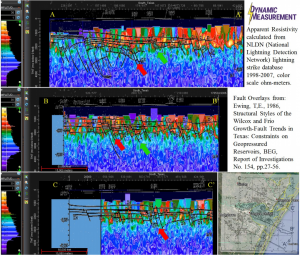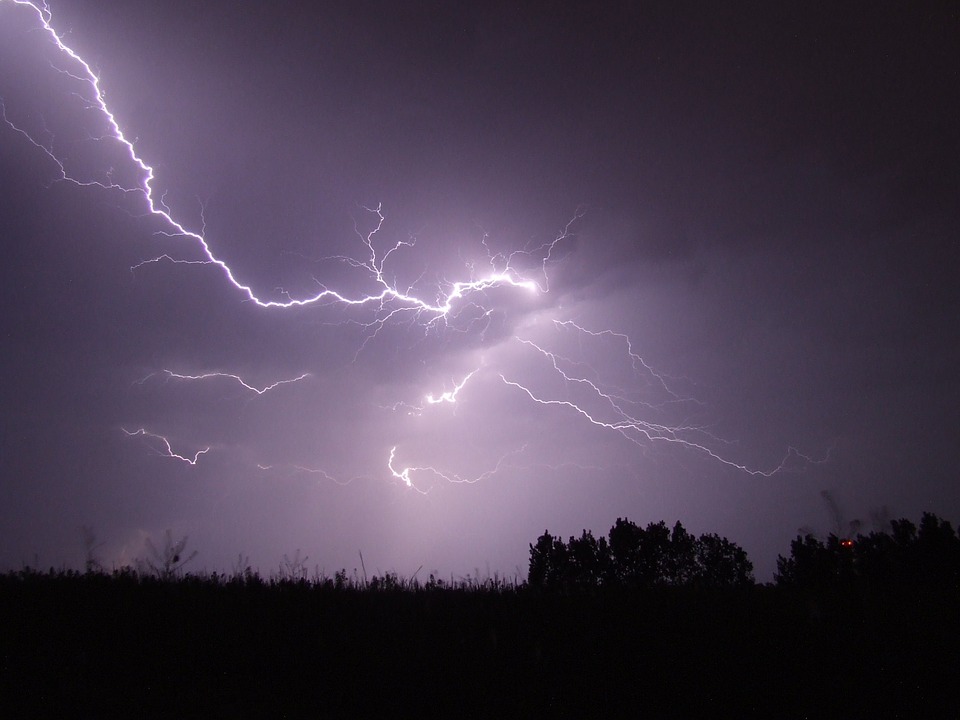Calculation of apparent resistivity maps and volumes from lightning databases provides new ways for remote geologic mapping and interpretation. The above images hint at the interpretation potential of lightning derived rock property volumes. These three images are from some recent calibration work by Kathy Haggar, a Dynamic Measurement Geologist, and Dustin Northrup, a Dynamic Measurement Intern at Brigham Young University. Seismic controlled fault cross-sections published by Tom Ewing in 1986 were overlain on apparent resistivity cross-sections from about the same locations. The red and green faults were correlated between cross-sections on maps from the same publication. The patterns in the apparent resistivity cross-sections match fault cuts on the Ewing fault cross-section.
Lightning can be described mathematically as a relaxation oscillator (Abraham, H.; E. Bloch (1919), “Measurement of the periods of high frequency electrical oscillations,” Annales de Physique. Paris: Société Française de Physique, 9 (1): 237–302). Neon tube relaxation oscillators and lightning have two alternating processes, and each of these processes is on a different time scale. First, a long relaxation period when the system approaches equilibrium. This alternates with a short impulsive period in which the equilibrium point shifts as the voltage builds across the capacitor and an insulating gas ionizes, becoming a conductor. The formula describing the discharge of a neon tube can be modified to model the discharge of lightning by adding an additional resistance, R2, between the strike point and the bottom plate of the capacitor. R2 limits the current and can be calculated.
Empirical results to date are excellent. Our Dynamic Natural Sourced Electromagnetic Method (D.NSEMSM) is quicker, less expensive, and safer than any other geophysical technique and has absolutely zero carbon footprint. The Dynamic Measurement team is working to better understand the physics of lightning to better scientifically explain our empirical results. Drop me a note and describe your exploration needs, and our team will propose how D.NSEMSM lightning analysis might benefit your natural resource exploration work. We can create the maps and volumes for a lightning analysis project anyplace in the world, with a project turn-around of less than two months.


